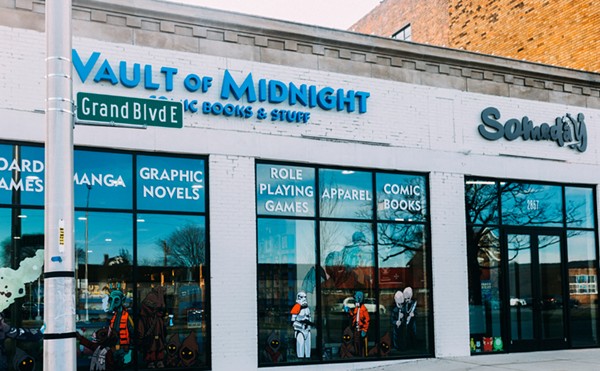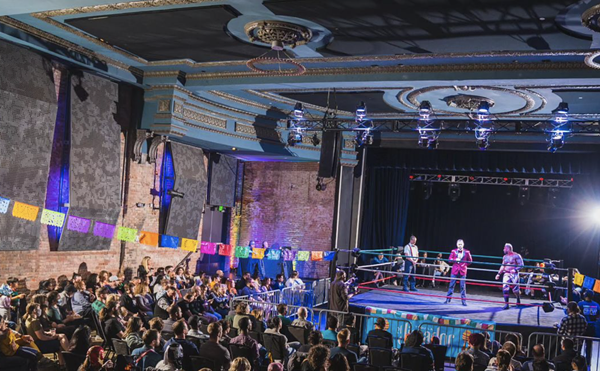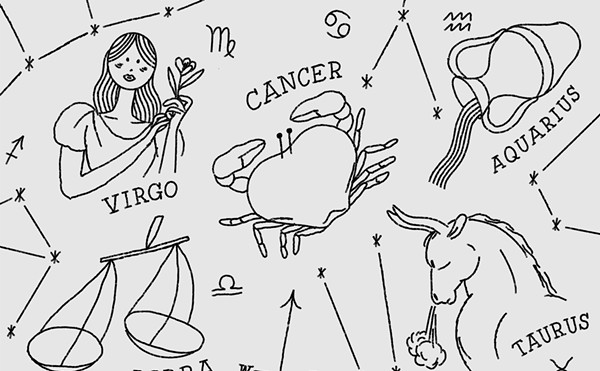It is dark. A soft wind rustles the branches of wisteria. Eyes and ears, sharp and aware, pick up the movement of something else. Silent feet move through the night, swiftly down a corridor, across a courtyard, up a sheer wall and onto a tiled rooftop. Then fly from roof to gable to neighboring roof, breaking the bonds of earth.
This marvelous action sequence — one of many in Ang Lee’s romantic martial arts adventure, Crouching Tiger, Hidden Dragon — signals the arrival of so much more than the latest entry in the kung fu sweepstakes. With Asian superstars Chow Yun Fat and Michelle Yeoh in the leads, the film tells a mythical tale of ancient China, “a kind of a dream of China, a China that probably never existed,” writes Lee in his production statement. But for us in America, it’s the autumn harvest, the coming to fruition of a long (though often confused) cultural courtship with the East.
Crazy Chinamen
Back in the 1930s and ’40s — a contradictory time of race hatred in the United States, with lynch-mob hysteria flourishing alongside the big-time popularity of jazz — a series of Hollywood films introduced audiences to Charlie Chan, an unlikely Chinese hero. This portly, slant-eyed Sherlock Holmes became such a sure thing at the box office that nearly 50 of his filmed adventures were turned out between 1931 and 1949. And though none of the three actors who played Chan (Warner Oland, Sidney Toler or Roland Winters) was actually Chinese, Americans ate up the mysterious inscrutability and wily ways of the “Oriental” detective. Assisted by his Americanized “Number One Son” (and, late in the series, a cooned-up black chauffeur played by Mantan Moreland), Chan seemed to root out killers through a combination of sleight of hand and ancient wisdom.
In the ’50s, in the aftermath of nightmarish wars with Japan and North Korea-China, some Americans seemed ready to open up to our former enemies. The writings of Japanese Zen scholar D.T. Suzuki, Buddhist popularizer Alan Watts and Beat authors Jack Kerouac and Gary Snyder introduced cross-cultural explorers to a new understanding of the Asian mind. Creepy stereotypes such as ’30s movie bogeyman Dr. Fu Manchu gave way to the idea of the firm but benevolent sensei, or guru, who guides his disciples along the difficult path to truth.
By the early ’70s (in a strange push-pull relationship at the close of the Vietnam War), his enigmatic martial dragonship Bruce Lee had captured the popular imagination in Fists of Fury and Enter the Dragon — with David Carradine’s TV hit “Kung Fu” fast on his heels, mixing the traditional mysterious Western wanderer with the exotic Chinese Shaolin tradition (even the enigmatic Cain was of mixed Asian and American parentage). Then the apparently endless parade of Bruce Li (not the original), Chang Li, Jackie Chan and Jet Li got us so used to the kick-’em-up genre that homegrown blunts such as The Karate Kid and The Matrix felt just like Hong Kong spirit.
From Woo with love
Meanwhile, over in Southeast Asia’s thriving film capital and the source of so much cinema product for the whole planet, Hong Kong director John Woo and others were borrowing freely from the Hollywood mythos (mobster flicks and Westerns in particular) while concocting a unique hybrid of East and West. Blood-spattered and melodramatic, Woo’s films featuring cool killers and conflicts of honor-to-the-death eventually added an actor who made them blow up and catch the attention of fans in the United States: Chow Yun Fat.
An international superstar of the first magnitude, Yun Fat had a presence more powerful than mere martial arts prowess — and an implied spirituality which, coupled with his looks, set him up to take on the previously unthinkable: He crossed over, literally, to the American film market as its first-ever Chinese heartthrob.
In his American debut, The Replacement Killers (dir. Antoine Fuqua), Yun Fat plays a deeply troubled hired assassin who burns incense to the Buddha before each hit. And he never grabs voluptuous co-star Mira Sorvino, though you just keep wanting him to. In James Foley’s The Corruptor, the Chinese actor speaks much better English and gives a first-rate, tormented performance. Then after working with Jodie Foster in last year’s Anna and the King, Yun Fat seemed primed for something really special — and here it is, a role which takes him back to his traditions and mother tongue, and which makes full use of that unique presence.
Comings and goings
Born in Taiwan and educated in the United States, director Ang Lee focused his first feature, Pushing Hands (1992), on a traditional Chinese subject: the meditative martial art of tai chi. But he located its action in suburban New York, where a Chinese master of the art arrives from Beijing to live with his son. The yin-yang of cultural interplay that results is a microcosm of much of Lee’s subsequent work. Highly praised from the very first, Lee took awards at the Berlin Film Festival (for both Pushing Hands and The Wedding Banquet), and from the Cannes Film Festival and the National Board of Review (for Eat Drink Man Woman).
But then he swerved way over to one pole of the East-West dialectic in his next three projects: Sense and Sensibility (an adaptation of the Jane Austen novel), The Ice Storm (a stunning depiction of American ’70s angst) and Ride With the Devil (a grim Civil War-era story). In these films, he showed a masterful hand with narrative and actors that took him, like a disciple of some as yet unidentified cinema sensei, to the next level of excellence and awareness.
And now in Crouching Tiger, Hidden Dragon, immersing himself all the way back into the deepest, most fantastical roots of Chinese history, Lee explores the visions of his own youth:
“Of course my childhood imagination was mainly fired by the martial arts movies I grew up with and by the novels of romance and derring-do I read instead of doing my homework. That these two kinds of dreaming should come together now, in a film I was able to make in China, is a happy irony for me.”
Yet here, in what seems like a wellspring of cultural essence or purity, Lee creates another hybrid:
“My team and I chose the most populist, if not popular, genre in film history — the Hong Kong martial arts film — to tell our story, and we used this pop genre almost as a kind of a research instrument to explore the legacy of classical Chinese culture. We embraced the most mass of art forms and mixed it with the highest — the secret martial arts as passed down over time in the great Taoist schools of training and of thought.”
Tao or not
What is the Tao? Certainly most in the West aren’t accustomed to thinking in its terms, despite the profusion of yin-yang symbols (popularized in the ’60s counterculture) that show the unity of apparent opposites. Like little brass Buddhas, incense burners and enameled chopsticks, the circle that contains swirling black-and-white halves is often for us no more than a symbol of generalized Asian otherness — consumed like any other novelty.
The Chinese developed Taoism (along with Confucianism) at least six hundred years before Buddhism arrived in the first centuries. Certainly by the sixth century, the Chinese already considered the Taoist-Confucian-Buddhist connection to be natural and inseparable.
The Tao, says Lee, “is enigmatic, in that it can only manifest itself through contradictions.” And the martial arts traditions of ancient China sought to develop an approach to combat (and all of existence) based on “internal strength,” he continues, “which in essence is searching for nothingness, the void, to find your strength. … The essence of Chinese philosophy, in martial arts as in all types of philosophies, is to seek for harmony and try to reduce conflicts. Like everybody has a Buddha in himself, has unlimited power within that you can let loose.”
Tiger and Dragon
The story that Lee has brought to the screen, then, is both very old and quite new. It combines the latest cinematic know-how with spectacular martial arts scenes (by Yuen Wo-Ping, fight choreographer for Jackie Chan’s Drunken Master, The Matrix and Charlie’s Angels) in order to express both ancient and progressive ideas.
The dialogue of Crouching Tiger, Hidden Dragon includes discussions about meditation, apprenticeship and its difficulties (in contrast to the tensions of love relationships), emptiness, humility, concentration, right practice — concepts that Hollywood has rarely investigated with enthusiasm. And that dialogue is in Chinese, with subtitles!
For those who hate reading subtitles, Lee’s flowing combination of cinematography, montage and heart-stopping action make them seem barely necessary. After the first explosive encounter between a mysterious black-shrouded intruder and master warrior Li Mu Bai (Chow Yun Fat), you’ll forget about reading and just savor the delicious sound of one of the oldest languages on earth.
Then there are the women of the story — added to their usual beauty is their incredible agility, grace, strength and willfulness. The fight scenes involving Michelle Yeoh (as Li Mu Bai’s friend and fellow practitioner), Zhang Ziyi (as the governor’s daughter) and Cheng Pei Pei (as the notorious Jade Fox) redefine sisterhood in the most contemporary terms. And though they demonstrate time and again that they’re not to be denied, these women warriors are also straight out of Chinese mythology.
Which begs the question of the very presence of combat in Lee’s film — what does the fighting do or add? As movie entertainment, violence sells nearly as well as sex. But Crouching Tiger constantly emphasizes the training, self-discipline, meditation and essential tranquility of its heroes and heroines. In a word, each of the fights leads to a further definition of character.
Old and new
As I sit in the dark with my Number Two Son (a 15-year-old fan of "Dragon Ball Z" and the WWF), the credits roll and the last strains of Tan Dun’s plaintive score (with sinewy cello solos by Yo Yo Ma) punctuate the ending. We get up and hit the street.
Well, how about it, son? For an action lover, how’d this flick hold up?
Number Two Son says, “Most action movies are hollow — they’re just about the protagonists kicking much booty — but this is a film. It has all the elements you need: story, plot, character development. And the combat is amazing: the flying and the weightlessness — they don’t break the rules of reality but bend them — the action’s not possible for humans but also not supernatural.”
What about the acting and the different roles?
“One of my favorite parts is the strong quasi-love story between the governor’s daughter and the bandit. It has some of the most open, beautiful shots of the movie — like when they’re in the desert with footprints everywhere in the sand. She’s ruthless and is just kicking people’s ass, but then she has this other, softer facet. She has all these different faces … that’s why you like her so much.”
And how does it all compare to “Dragon Ball Z”?
“It shares a lot of things in common: The actual fighting, the choreography of it is very much like “Dragon Ball Z” — the confrontations, the staging, the contrast between waiting (staring each other down) and fighting the battles.”
But “Dragon Ball Z” is as old to the Japanese as G.I. Joe is in the States. As the Tao teaches, things take their own time — though it has been a while.
George Tysh is Metro Times' arts editor. E-mail him at [email protected]




